What’s the best way to assess a car in every important dynamic aspect – in one day, without fear or favour? Drive it, of course.
Drive it on a well-known and demanding course, with full concentration. The answer is so blindingly obvious that it’s amazing more people don’t do it: you undertake a long, well-planned and varied journey, preparing yourself for the experience as well as you prepare your car. Take notes of every nuance and foible so you can amplify the excellent bits and chase away the faults when you get back.
Mike Cross, Jaguar’s legendary chief engineer of vehicle integrity, has been doing this sort of thing for the past 30 years, and his input – along with that of the skilled team built around him – is a powerful reason why Jaguars (and Land Rovers) are so universally great to drive. This team decided a very long time ago what the Jaguar’s eye view of a great car truly was and has been working ever since to ensure that each new car possesses that character while improving the strain.
The refinement task has two phases: early and late in a car’s gestation. At the concept stage, when the idea is only a few months old, the vehicle integrity team describe in great detail what the car must be like to fulfil its purpose and please its customers. (“We wanted the new Land Rover Defender to drive the way it looks,” explains Cross.)
At the other end of the process, once fully driving prototypes have hit the road for maybe 15-18 months before sign-off, the team begins a series of real-world assessments to see how well engineers and designers have met the brief.
These days, because you can ‘drive’ cars in computers while they’re still being created, prototypes tend to pop out at least 90% as good as they should be. It means the drive team can start its subtle refinement work straight away; there’s far less basic groundwork to be done.
![]()
Prototypes are nowadays tested all over the world, and all-new models can do half a million test miles before they’re signed off. Jaguar has outposts in sandy climes where the temperature hits 50deg C and favourite Arctic haunts where cars must work perfectly at 30deg C below. High-speed cruise tests are done on Germany’s unrestricted autobahns; full performance testing at the Nürburgring or Nardò or on JLR’s own Gaydon track, a kind of junior Le Mans where the most potent Jaguars can hit 200mph.
But these are extremes of driving. Do all that and you still haven’t verified the car’s capabilities in conditions that most owners will encounter in ordinary Jaguar ownership. If you want British cars to work in Britain, tuning them for British roads is a priority. And that goes double because (and feel free to check this with any French or German test engineer you know) UK roads are so uniquely difficult and badly repaired that when a car works in the UK, it will work everywhere.
All of which is why I recently found myself (notionally) at JLR’s headquarters, right next to the British Motor Museum on the M40 motorway, about to attack a test route into mid-Wales used by Cross and his team for testing prototypes. It’s just over 300 miles long and comfortably achievable in a day, Gaydon to Gaydon. Hence the ‘Mike Cross 300’ name we’ve coined for this occasion.
“We like this test because you use the car as a typical customer would,” says Cross, “driving purposefully but with no hoonery. In one day, you’ll encounter just about every condition our owners are likely to come across in years of use.”
Having driven most of these roads myself, many alongside Cross, I can vouch for the fact that, as well as showing the gamut of any car’s capabilities, they contain a very decent element of challenge and fun. They demand reasonable skill and concentration from drivers while directing them through some of the UK’s finest scenery. What better exploit for a first post-lockdown journey, now that our incarceration has taught us all over again about the simple joy of cars?
“We usually leave Gaydon at about 6am,” says Cross, “heading north-west on the M40 then around Birmingham on the eastern side. Doesn’t sound very uplifting, does it? But this is as important a phase of our trip as any. We get to Brum as the traffic is building up, which isn’t a negative for us. It allows time to assess a lot of stuff: how well the car’s stop-start system is integrated, how easy it is controlling distance between yourself and the car ahead, how intuitive the slow-speed braking is.”
Cross lists plenty more. Is the seat comfortable? Initial comfort sells cars in showrooms; we’ll want to revisit day-long comfort, which is quite different, much later. Is the brake pedal soft? Or is its travel too long? If the pedal isn’t right, you can have heart-in-mouth moments at 20mph.
“You don’t want soft brakes,” says Cross. “Or a long pedal. It’s about how intuitive they are. You want to know that working brilliantly at high speed hasn’t stopped them being progressive and easy to use when you’re just creeping along. If there are issues with pedal ergonomics – the location or the efforts needed – this is when you want to find them. Same goes for the autowipe system if it’s raining. Or auto lights if it’s winter and still dark. That’s all part of our team’s remit, too. These things must be as intuitive and effortless as the rest of the car.”
![]()
We pass Birmingham on the eastern and northern sides, connecting the M42 and M54 with a dozen miles of well-clogged M6. Cross and his testers like these roads for their worn surfaces, the frequently noisy concrete sections interspersed with coarse Tarmac: “Road noise is wearing, and you definitely don’t want a big noise difference between surfaces.”
As speeds rise, wind noise might become a factor: “You want as little of that as possible and especially no buffeting, which breeds fatigue.” That said, you probably won’t achieve much speed here anyway. Instead, you’ll probably be stuck behind trucks, because this is a busy dual carriageway – which Cross and Co see as another chance to assess throttle and brake calibration. They make use of every mile.
If this is a Jaguar engineering drive, or even if it isn’t, you’ll be wise to pause at Telford Services on the M54, because it’s good practice to take a break. You might want to make notes, too, and if you’re part of a group, you’ll probably swap cars. There’s no better way of knowing what works best than stepping directly from one car to the next.
Beyond Telford, the journey’s character starts changing. The M54 gives way to the A5 and you’re soon on the Shrewsbury ring road, a cut-and-thrusting kind of long-cut around the town where everyone seems to know the road better than you. You’re on and off the throttle, so a sweetly co-ordinated response from both engine and gearbox really counts. Can you make easy progress in such competitive conditions? And does the engine sound like a Jaguar’s? That’s a priority…
The road is usually a single carriageway now, with decent sight lines and some safe overtaking opportunities, although these are a particular test for precise power delivery and quick-acting gearbox controls. Not that we’re on the A5 for long; we soon spear off at the A458 towards Welshpool and into Wales proper on a route Cross perfected years ago, partly from motorcycle exploits, partly through test driving with his friend Richard Parry-Jones, former global head of product development for Ford and a proud Welshman.
Cross himself is well known for meeting up with hacks at a Welshpool hotel called the Royal Oak, a handy inner-town base for meetings and for demonstrating the latest JLR machinery. Squeezing your shiny motor into the pub’s oddly shaped car park is a particular test.
“From here we’re into some lovely driving,” says Cross. “Our route beyond the town is a bit narrow, but it has some great bends that sweep up and down, with the odd tighter twist – all great for assessing steering precision and handling confidence.” On we go much like that, through a staggered left-and-right junction towards Llanfyllin. There’s a twisty, narrow section – you need immediate steering response – but it opens out before you get to the town itself.
“It’s amazing how much different roads like these can feel in cars – not ours – with steering that’s okay but not perfect,” says Cross. “It’s why we work so hard getting it right…”
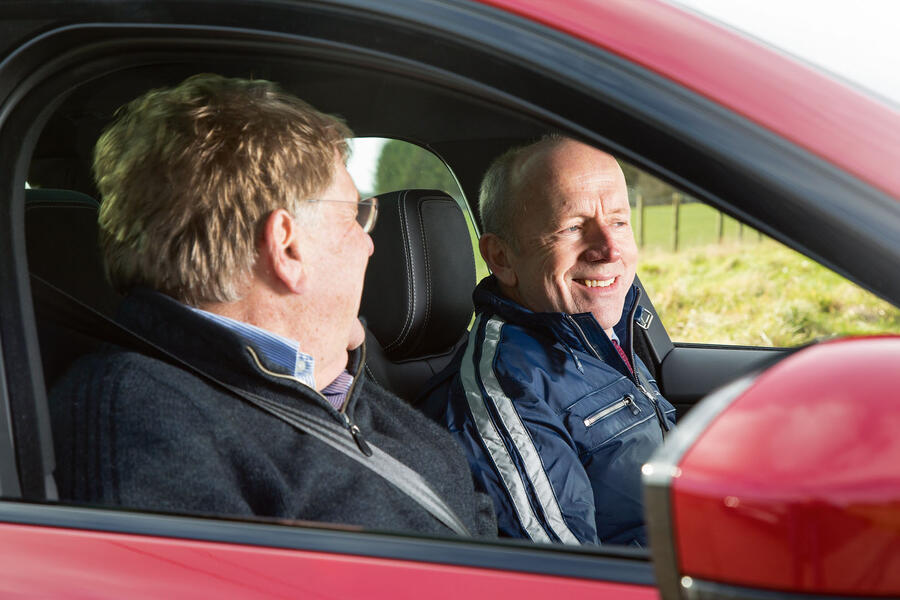
Llanfyllin is a welcoming place with nice, black-and-white buildings and, inevitably, a potential coffee stop if you missed the Royal Oak half an hour earlier. There’s also a school, past which you should take care to creep. “Having previously gone a bit quicker,” says Cross, “you want to go slowly here, and it’s a great place to try gentle braking at low speed.”
Beyond Llanfyllin, we take an immediate right on the B4580 and then left on the B4391, signposted Bala. At first, the road is narrow and heavily wooded with a big drop on one side and a rock wall on the other, so an accurate perception of your car’s width is essential.
You press on north-west down the Tanat Valley, as the traffic gets sparser, through Llangynog (where there’s a handy spot by the public loos for a driver change) and onto some of Britain’s finest driving roads, where you can frequently see three corners ahead. It’s the kind of road that you hope will never end, but soon enough a kind of Alpine pass leads you into town, over a series of obstacles and undulations that are especially good for assessing the effects of bump-steer.
Roll through the busy town of Bala, then head out (taking care past another school) for 10 miles on the A4212 before forking left onto the B4391. Cross and Parry-Jones are content to label this one the finest driving roads in Europe for its clear sight lines, good surface, variety of corners, scenery and lack of traffic. There’s no need to go crazy: it’s enjoyable just to stroke along smoothly and briskly. You’ll make quick progress anyway. Fittingly, this is the climax of our drive.
Our destination is Ffestiniog, about eight miles farther on, with another narrow, twisty entry but again good sight lines and very little traffic. On the right day, you can see the sea, 20 miles in the distance. It’s lunchtime, the sun is overhead, so there’s no glare, and I guarantee that you’re elated both by the general joy of driving and by the way your own feeling of precise control has been honed by the challenges of the road. Time now for a yarn and a sarnie: suitable stopping points are available.
Now’s the time for decisions. If you’re a Jaguar test driver, you’ll probably swap cars for the umpteenth time, discuss nuances of the prototypes you’re assessing and make some notes before making tracks. In the reverse direction, Cross assures us, the challenges are similar but different – and in the car you’re now assessing, it’s stuff like day-long seat comfort and the cumulative effects on fatigue (or lack of it) from road and wind noise.
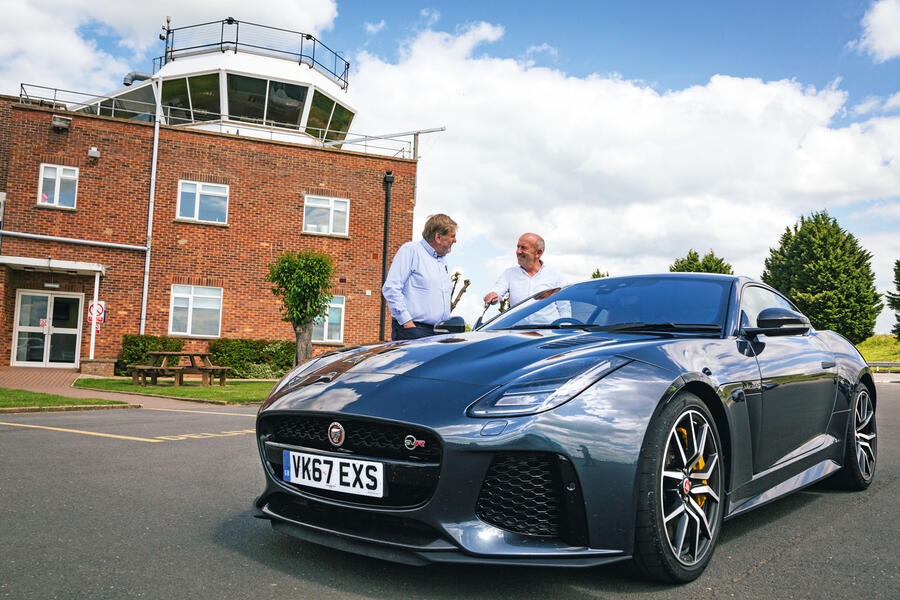
By now, you have a well-matured view of your car’s ride comfort and its bullet-point strengths and weaknesses, which you’ll work on tomorrow with the rest of the team. And maybe by the time you’re back at Gaydon, you’ll have headlight performance to discuss as well.
For you and me, it’s different. We’re in no hurry. There’s a leisurely lunch to be eaten. Our wisest course thereafter is probably to head a few miles further west to the coast – to Porthmadog, say, where there are places to explore and welcoming B&Bs in which we can take an early night. We’ll arise early, point our car east back to Ffestiniog, run briefly south on the A470 to connect with the A4212, source of so much of yesterday’s driving, then turn left and start enjoying it all over again.
HOW TO PREPARE FOR ADVENTURE
True enjoyment of drives as serious as this can stand or fall on preparation, for which Mike Cross offers a simple checklist.
â– Make sure your car’s tyre pressures are spot on. Set them exactly to the maker’s specification, and be sure to do it when they’re stone cold.
â– Clean all glass. A dirty windscreen or headlights that only emit a proportion of their available illumination will damage your enjoyment. Be especially aware of gunge inside your windscreen; that’s often missed.
â– Stow cabin junk to suppress rattles. Vibrating ‘stuff’ can destroy your impression of your car’s tautness.
â– Fuel the car and check all other levels before setting out. It’s no fun running out of washer fluid mid-journey.
â– Dress comfortably. In particular, wear the right shoes for driving. You’ll fit behind the wheel better and the foot controls will seem more responsive.
â– Get the driving position – seat, steering wheel and three mirrors – exactly right. Sit as upright as you can behind the wheel: no slumping. This reduces fatigue.
READ MORE
Defender heroes: the people behind Land Rover's definitive 4x4
Jaguar Land Rover’s SVO plots expansion after bumper year

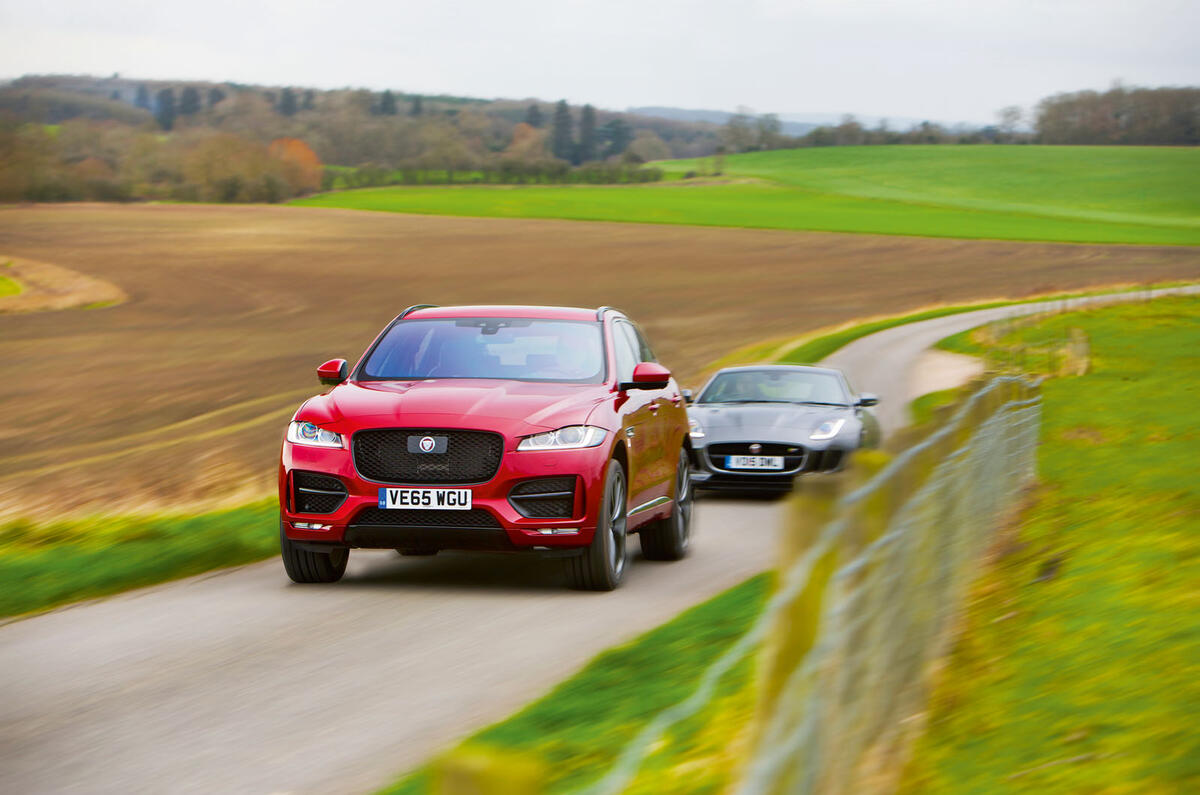
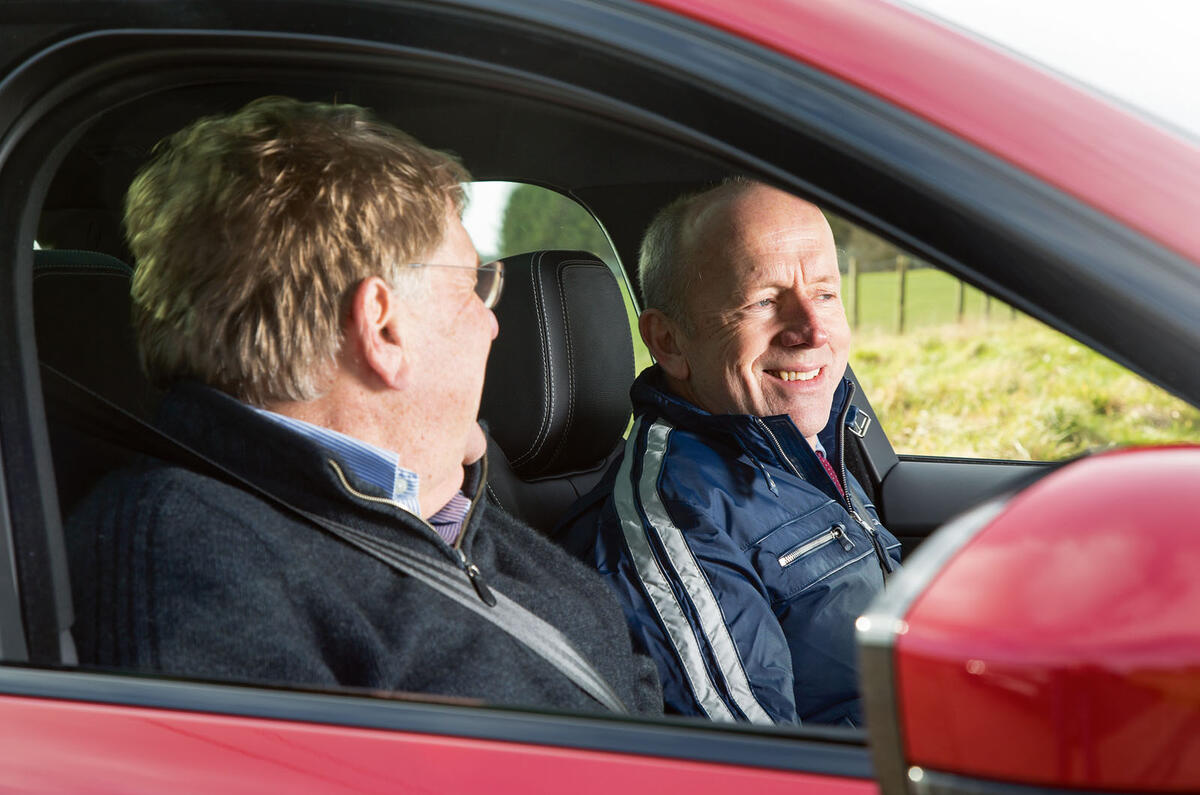
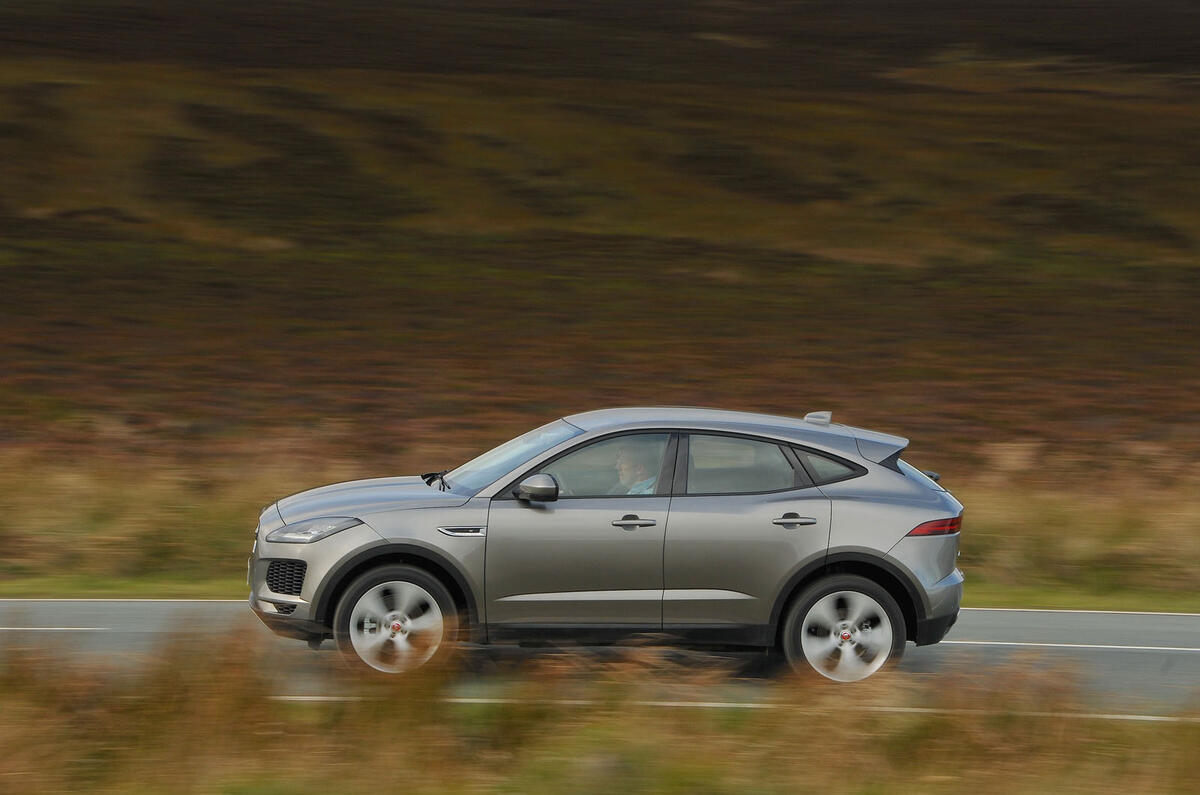
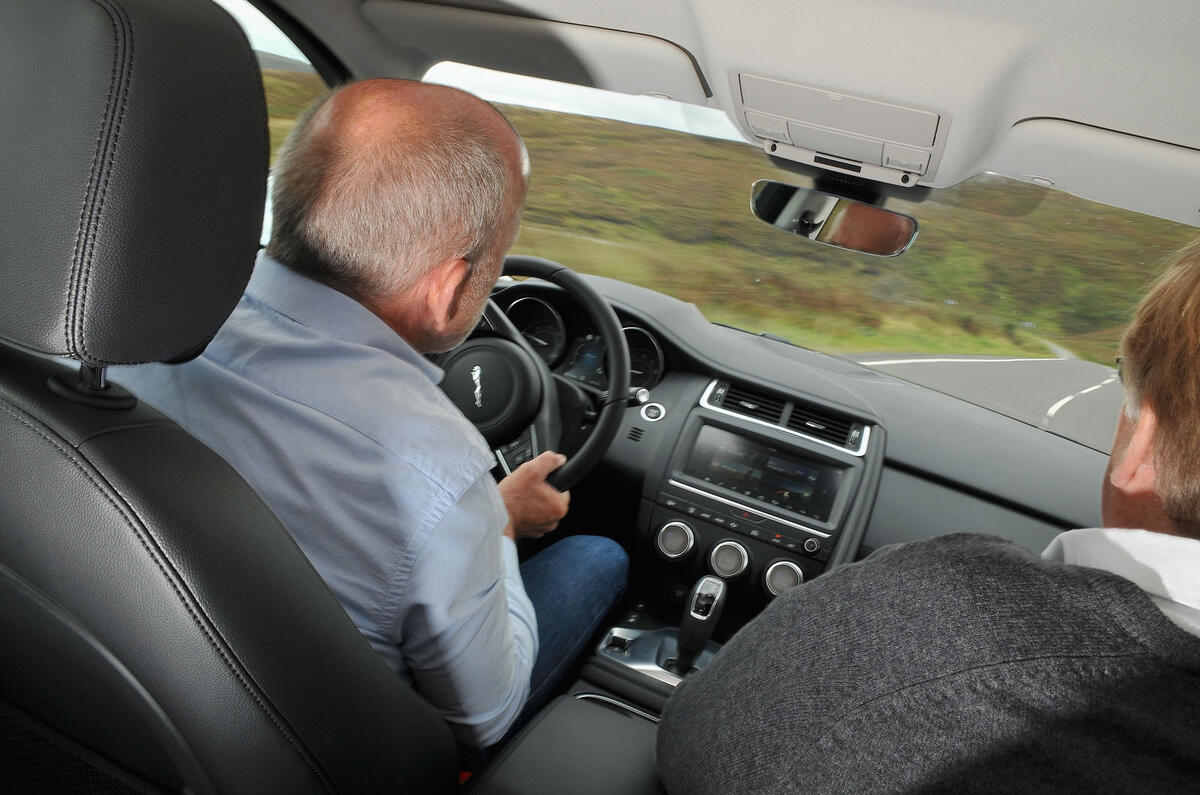
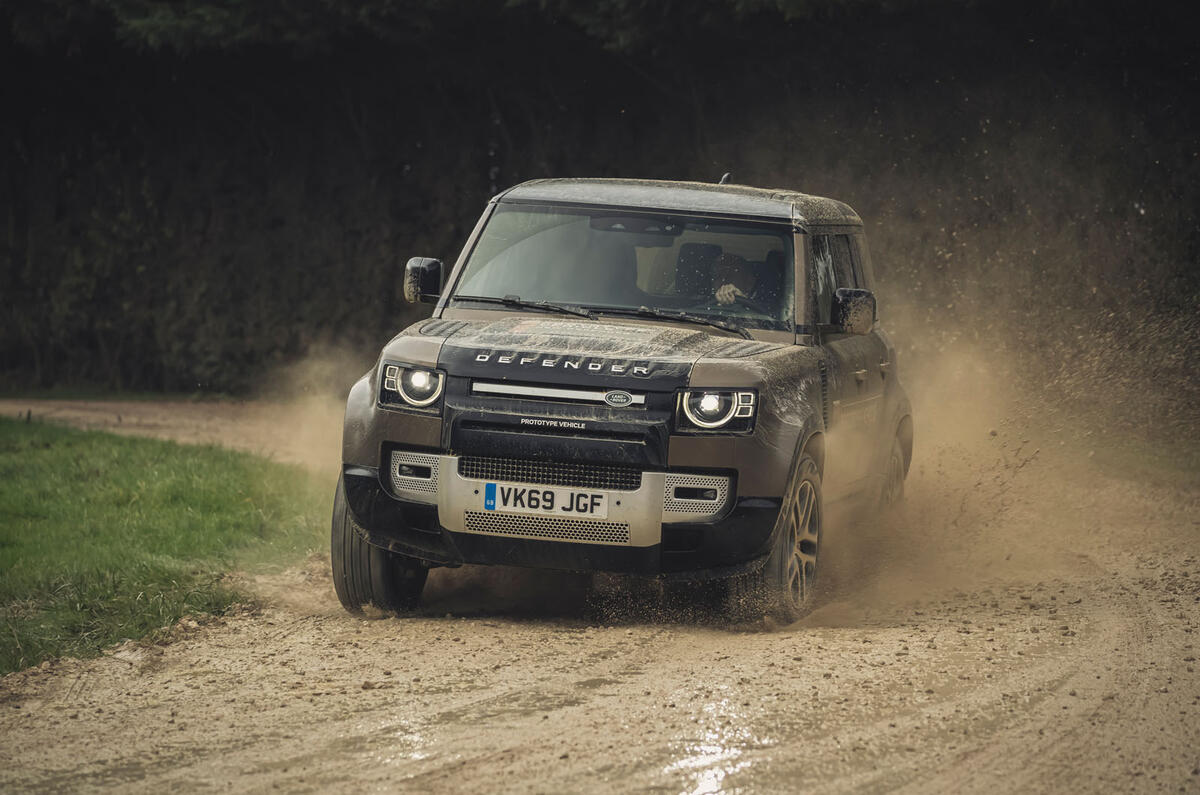
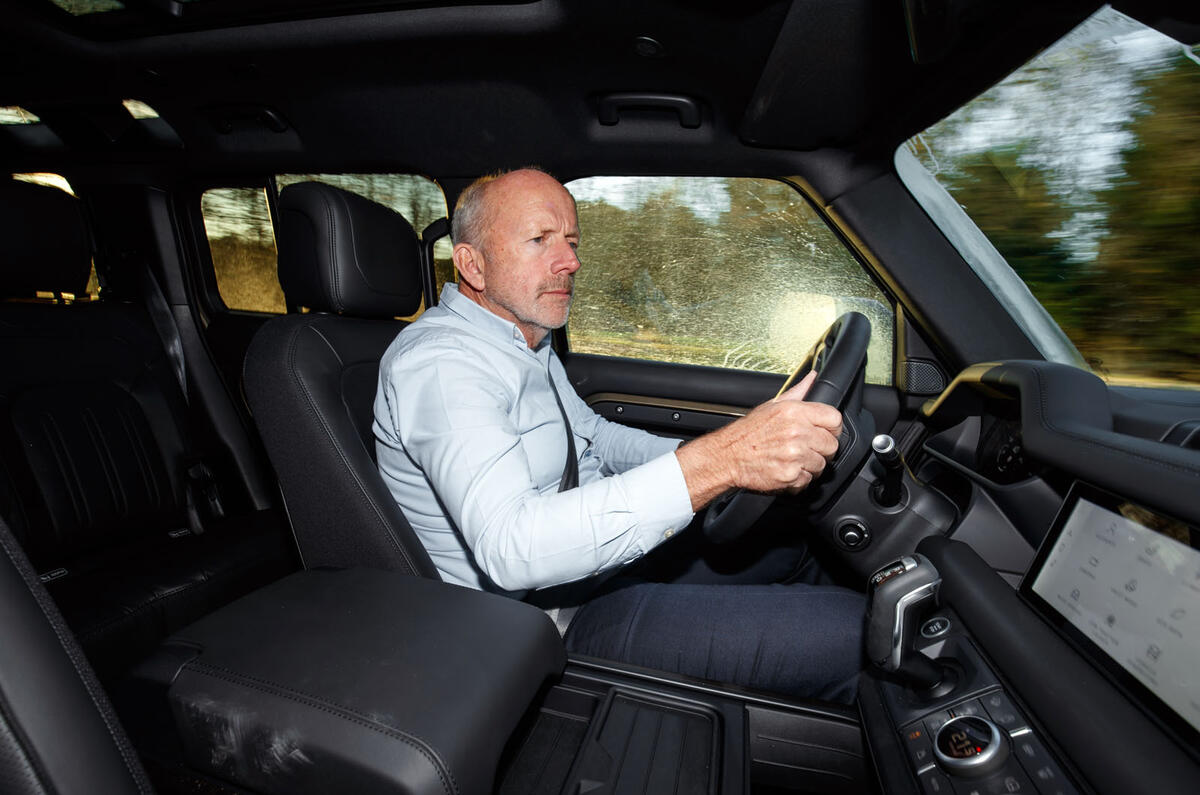

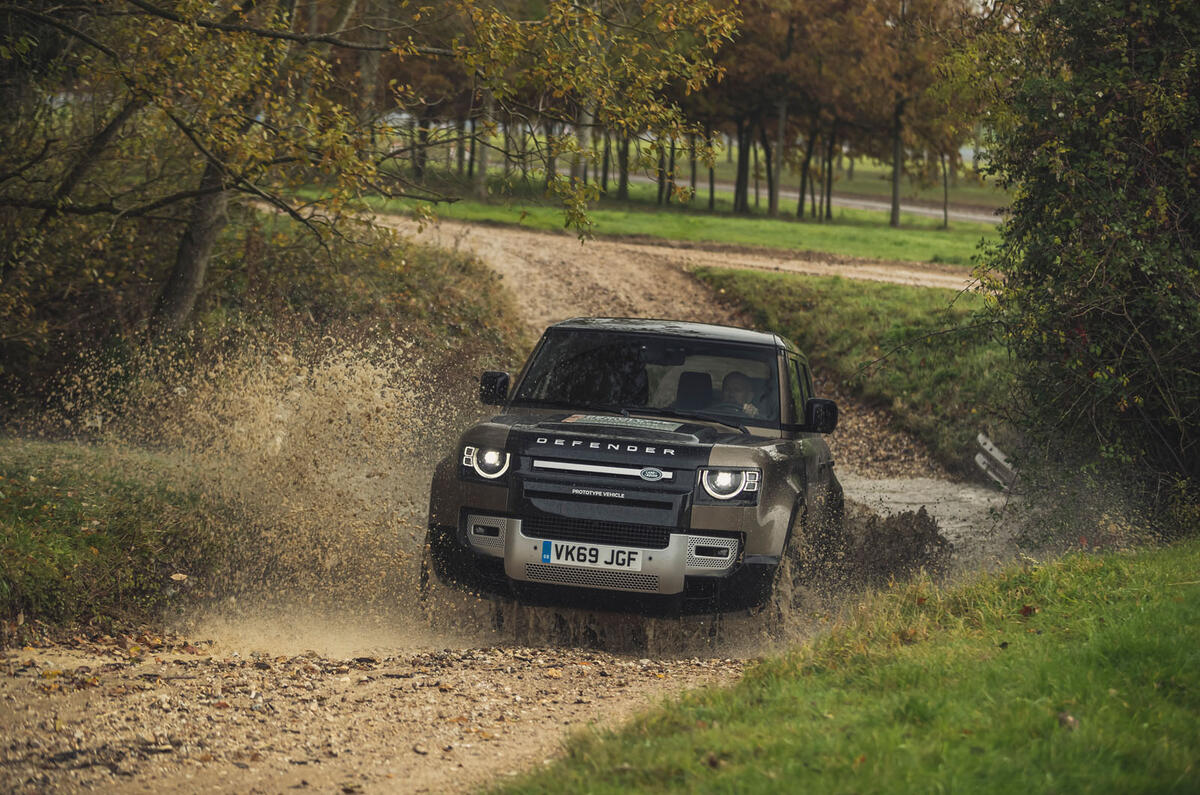
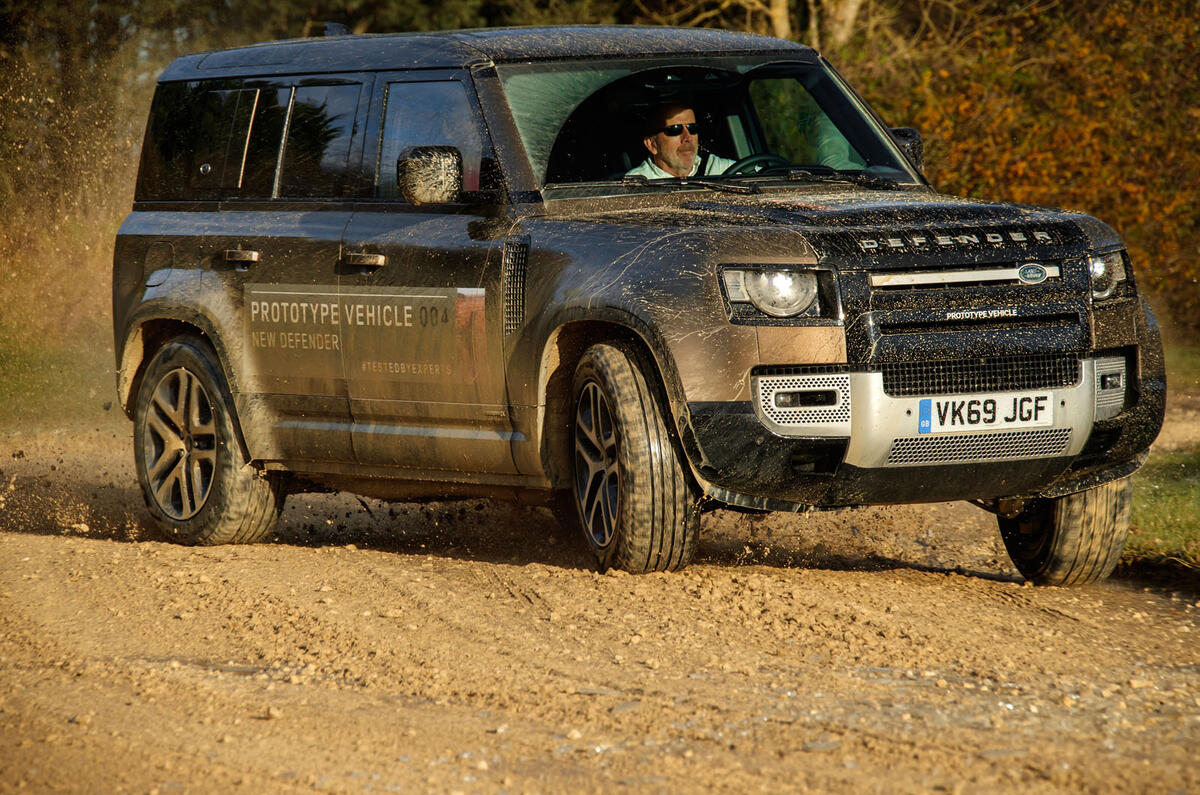
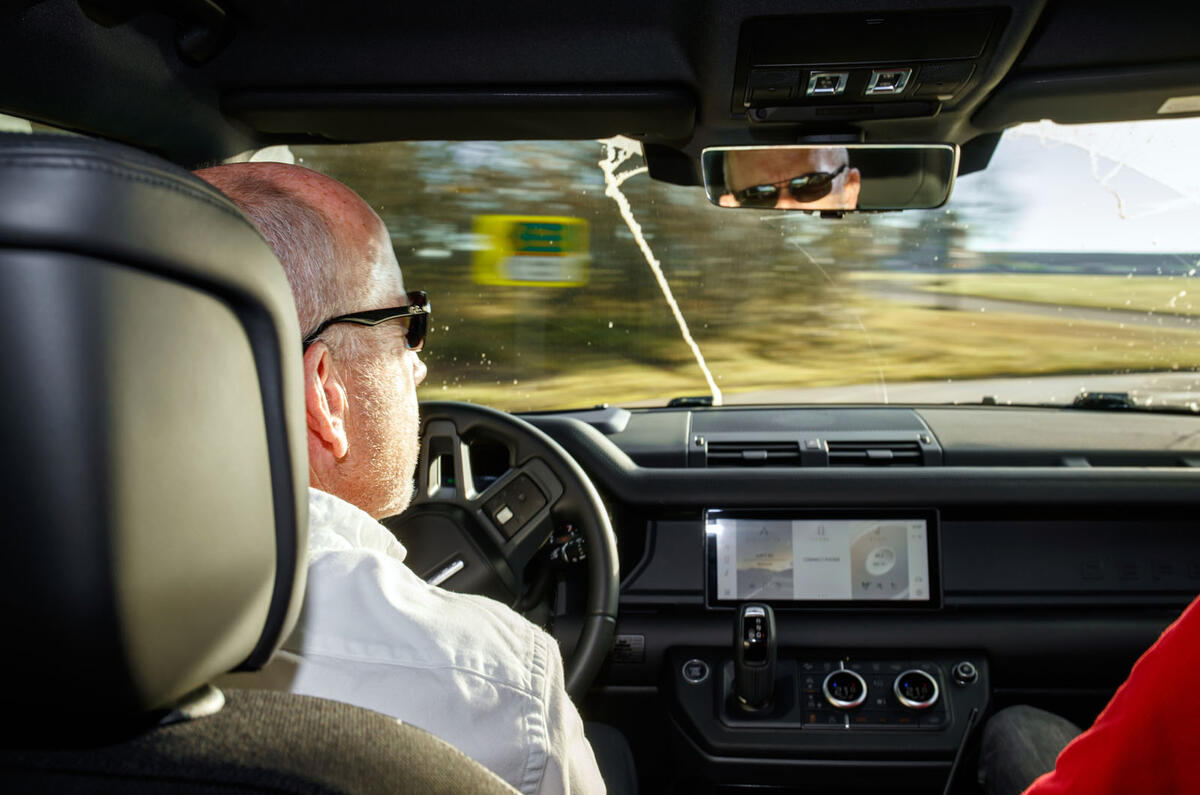
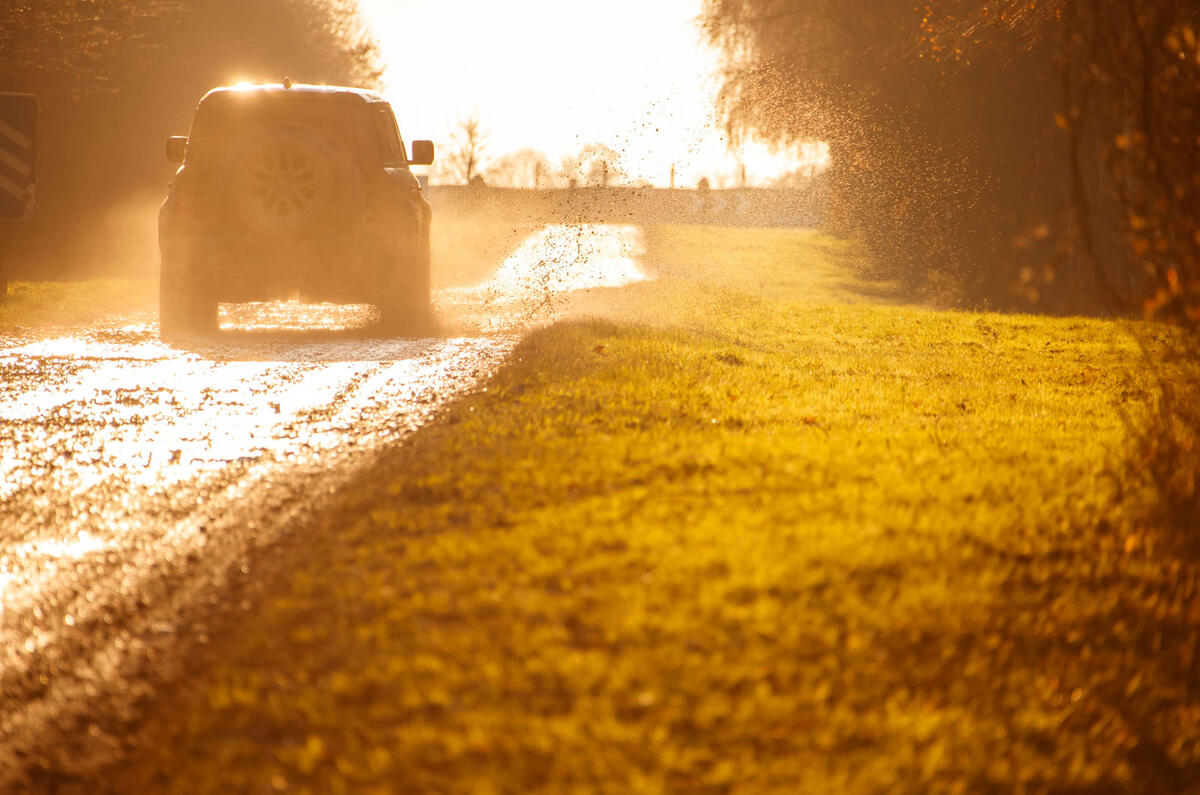
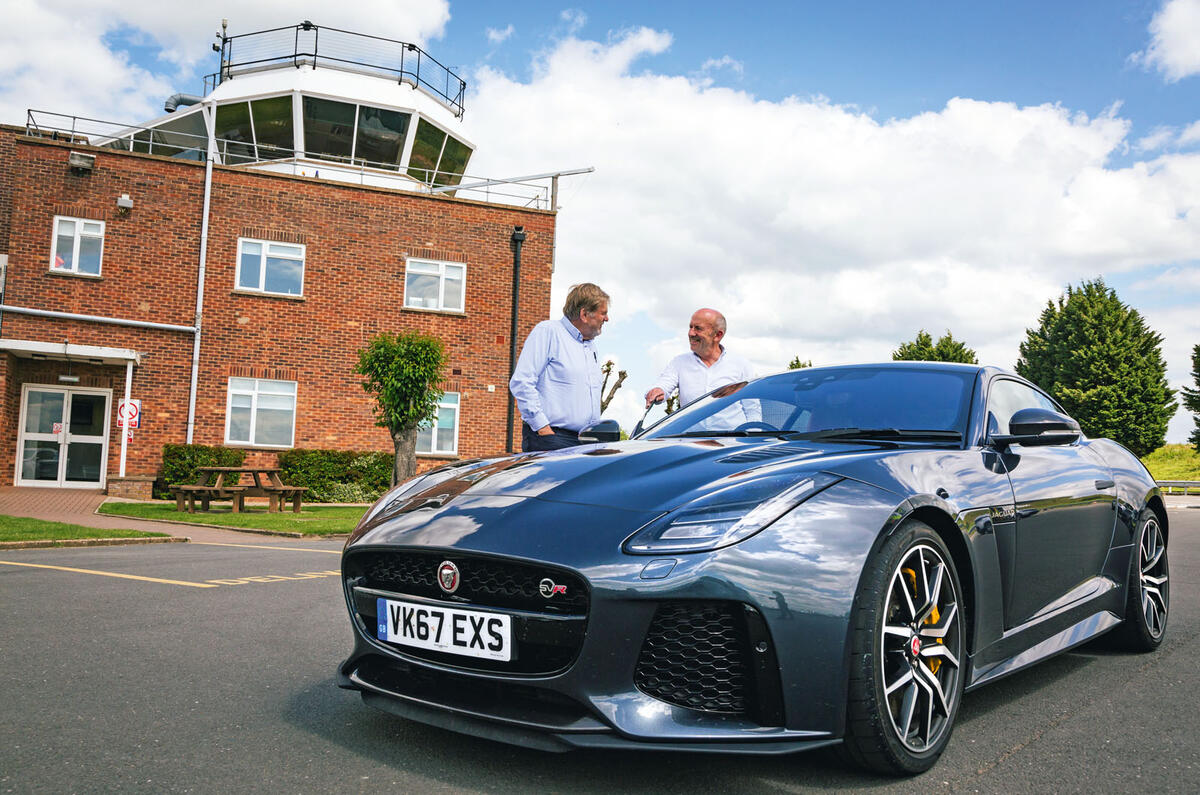
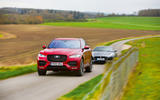
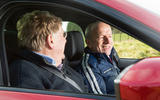
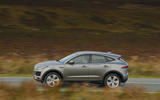
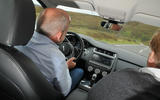
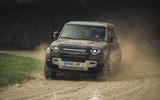
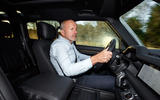
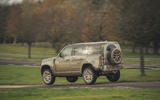


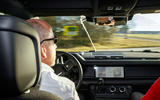
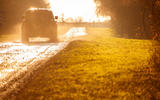
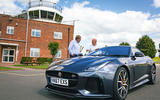






Join the debate
Add your comment
Love affair with Cross
I see the love affair with Mike Cross continues.......
All JLR PR
Also, to be correct, you fork right onto right onto B4319 from the A4212, not left - a road I have used for many years.
Rtfazeberdee is right
And when you use your your F-Pace (as shown in the photos) in the same way as Rtfazeberdee, and most other normal people, you notice all the faults that Mr Cross seemed to forget - such as the sat-nav. Some times you can park it for a few days, jump back in and it works immediately. Other times, you park for 10 minutes, come back to the car and it doesn't even know which country it is in.
Sometimes when you put the car in P and the handbrake on, it will go into auto-stop, you then press the stop-start button and it shuts down as you would expect. Other times, totally randomly, it shuts itself down for you, when you expect that it will have gone into auto-stop. You press the stop-start button expecting to shut it down and instead it fires back up again.
On a hot day, you decide to close the roof blind to keep the car cool, and your passenger opens the door to get out, this triggers the car to shut down and the blind stops, so you have to fire up the car again, just to shut the blind.
The auto-lights come on under trees, and you can never find the right setting on the auto-wipers.
If they spent more time sorting these irritations and less time assessing bump steer on alpine style roads in Wales, then they might sell more cars. Most buyers don't notice steering precision and handling on tight twisty sections, because most buyers have a family, and you notice the kids puking before you notice the steering, if you drive it like Lewis Hamilton on a qualifying lap of Spa.
I'd trade the
...or as our F Pace did, lock
Having been behind an F-Type
Having been behind an F-Type on a nice country road, it's too wide to be enjoyable in such conditions.